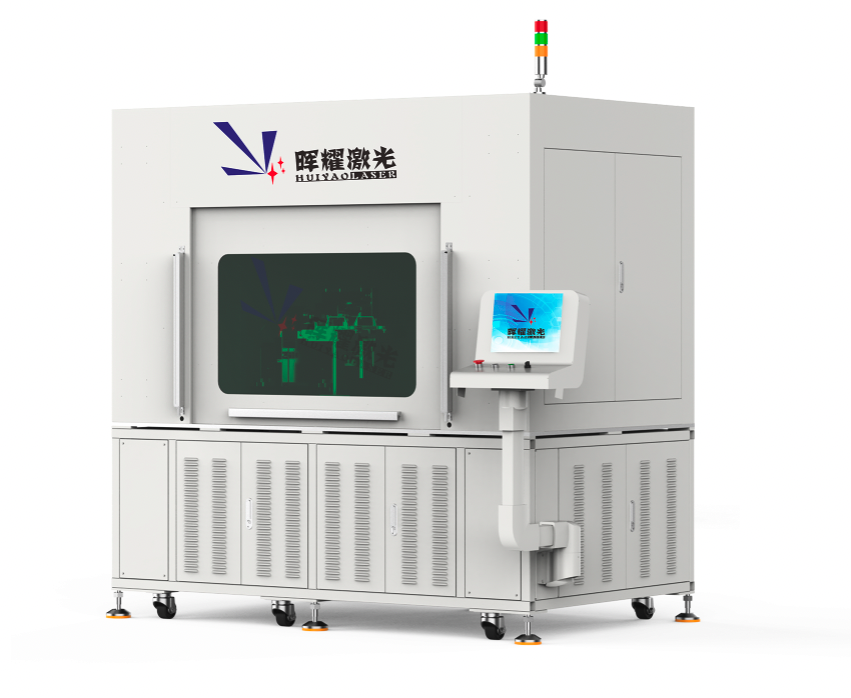Battery Cell Sealing Nail Welding Equipment is an essential tool in the production of high-quality batteries, particularly in the lithium-ion battery industry. This equipment is designed to ensure the precise and reliable sealing of battery cells, which is crucial for the safety, performance, and longevity of the batteries. As the demand for efficient and sustainable energy storage solutions continues to grow, the importance of advanced welding technologies in battery manufacturing cannot be overstated.
The primary application of Battery Cell Sealing Nail Welding Equipment is in the assembly of lithium-ion batteries, where it is used to seal the battery cells by welding the nails (or terminals) to the cell casing. This process is critical in ensuring that the battery is hermetically sealed, preventing any leakage of electrolytes and ensuring the integrity of the battery cell. The equipment is widely used in various industries, including electric vehicles (EVs), consumer electronics, and renewable energy storage systems.

Working Principle of Battery Cell Sealing Nail Welding Equipment
The working principle of Battery Cell Sealing Nail Welding Equipment involves the use of high-precision welding technology to join the nail (terminal) to the battery cell casing. The equipment typically employs resistance welding, laser welding, or ultrasonic welding techniques, depending on the specific requirements of the battery design. The process begins with the precise positioning of the nail and the cell casing, followed by the application of controlled heat and pressure to create a strong, durable weld. The equipment is often integrated with automated systems to ensure consistent quality and high throughput.
Features of Battery Cell Sealing Nail Welding Equipment
High Precision: The equipment is designed to achieve micron-level precision in welding, ensuring a perfect seal every time.
Automation: Advanced models are fully automated, reducing the need for manual intervention and increasing production efficiency.
Versatility: The equipment can be adapted to various battery cell designs and sizes, making it suitable for a wide range of applications.
Durability: Built with high-quality materials, the equipment is designed to withstand the rigors of continuous industrial use.
Safety: Equipped with multiple safety features, including temperature control and emergency stop functions, to ensure safe operation.

Advantages of Battery Cell Sealing Nail Welding Equipment
Consistent Quality: The automated nature of the equipment ensures that each weld is consistent, reducing the risk of defects.
High Efficiency: The equipment can process a large number of battery cells in a short amount of time, significantly increasing production rates.
Cost-Effective: By reducing the need for manual labor and minimizing material waste, the equipment offers a cost-effective solution for battery manufacturers.
Enhanced Safety: The precise control over the welding process reduces the risk of overheating or damage to the battery cells, enhancing overall safety.

Efficiency of Battery Cell Sealing Nail Welding Equipment
The efficiency of Battery Cell Sealing Nail Welding Equipment is one of its standout features. With the ability to process hundreds or even thousands of battery cells per hour, the equipment significantly boosts production capacity. The integration of advanced welding technologies, such as laser welding, further enhances efficiency by reducing the time required for each weld and minimizing energy consumption.
Technical Parameters of Battery Cell Sealing Nail Welding Equipment
Welding Speed: Typically ranges from 0.5 to 2 seconds per weld, depending on the welding technique and battery design.
Welding Power: Varies based on the welding method, with laser welding requiring lower power compared to resistance welding.
Precision: Achieves welding precision within ±0.1mm, ensuring a perfect seal.
Automation Level: Fully automated models can operate 24/7 with minimal human intervention.
Compatibility: Compatible with various battery chemistries, including lithium-ion, nickel-metal hydride, and lead-acid.
Factors to Consider When Choosing Battery Cell Sealing Nail Welding Equipment
Production Volume: The equipment should be capable of handling the required production volume without compromising on quality.
Battery Design: The equipment must be compatible with the specific design and size of the battery cells being produced.
Welding Technique: The choice of welding technique (resistance, laser, or ultrasonic) should be based on the specific requirements of the battery design.
Automation Level: Depending on the production needs, the level of automation should be chosen to balance efficiency and cost.
Maintenance and Support: Consider the availability of technical support and maintenance services to ensure long-term reliability.

Battery Cell Sealing Nail Welding Equipment plays a pivotal role in the modern battery manufacturing industry. Its ability to deliver high precision, efficiency, and consistency makes it an indispensable tool for producing high-quality batteries. As the demand for advanced energy storage solutions continues to rise, the importance of this equipment will only grow, driving further innovations in welding technology and automation.
About Huiyao Laser
Huiyao Laser Technology (Luoyang) Co., Ltd. is a high-tech enterprise focusing on the research and development, manufacturing and sales of equipment for the new energy industry. Huiyao Laser provides comprehensive high-performance laser systems designed for the automotive, electronics, medical equipment, aerospace and other industries and committed to providing customers with comprehensive laser welding equipment, battery cell assembly line equipment, module PACK automatic line equipment, battery structural parts automation equipment and other high-end intelligent equipment. It can tailor the most suitable production line solutions according to the different production needs of customer companies











